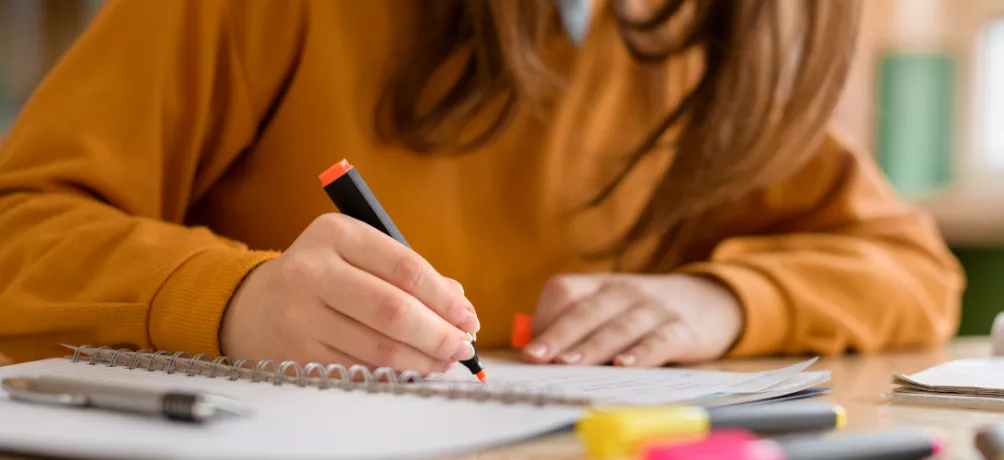Four Note-Taking Methods
By Huntington Learning Center
If note-taking isn’t a skill your teen possesses today, it’s critical that he or she develops it before heading off to college. Note-taking helps your teen retain information as he or she learns it and provides a useful reference for studying for tests. It promotes active listening and engaged reading.
There are many types of methods, from the simplest to the more complex. Here are several options with which your teen should become familiar:
- Cornell note-taking – The Cornell note-taking method has students set up a page with a left-hand column for cues/questions, a right-hand column for notes and a bottom summary. The notes column is where your teen should write down what the teacher says in class and/or puts on the board (key ideas and essential details to remember later). The cues column is where your teen should jot down questions or list terms that are answered/defined in the notes column.
- Outline method – Students who have written essays or reports probably know quite a bit already about outlining. The outlining note-taking method has students divide notes into main topics, subtopics and key points for each of those topics. Your teen should start notes with main topics and indent rows underneath for corresponding subtopics and key facts. Like this:
Main topic
Subtopic
Key idea 1
Key idea 2
- Concept mapping – Students who are visual learners might like the concept mapping method of taking notes. Put simply, key concepts and ideas are captured in boxes or circles and related ideas are connected with lines. A larger box in the center of a page might contain the main idea of the notes on the page, while smaller, connected boxes could include the topics and subtopics.
- Charting method – Charting can be especially useful when students are taking notes while reading. It involves creating labeled columns—for example, equation, when to use and example—and rows to fill out those columns. The result is a set of notes that look like a table, making this method ideal for recording lots of information and making it easy to review later in a more succinct way.
Whatever method of note-taking your teen uses, the same general rules apply:
- Do not write down every word that the teacher says.
- Organize notes while writing them (or clean them up after class if needed).
- Do not forgo listening for taking detailed notes (and instead, take notes on the important things, not everything).
- Call out key ideas, questions and terms/concepts by boxing them, putting them in their own column or using some other approach.
Your teen’s overall goal should be to translate what teachers cover in class (and what he or she reads in textbooks or online) into useful notes that are understandable. Having clear, clean notes will help your teen study effectively for exams and quizzes and keep up in class. Your teen can review those notes before each new class period to make sure he or she is familiar with significant concepts and can answer any important questions.
Note-taking does not come easily to all students. If your teen needs help becoming a better notetaker and student, contact Huntington at 1-800 CAN LEARN.


